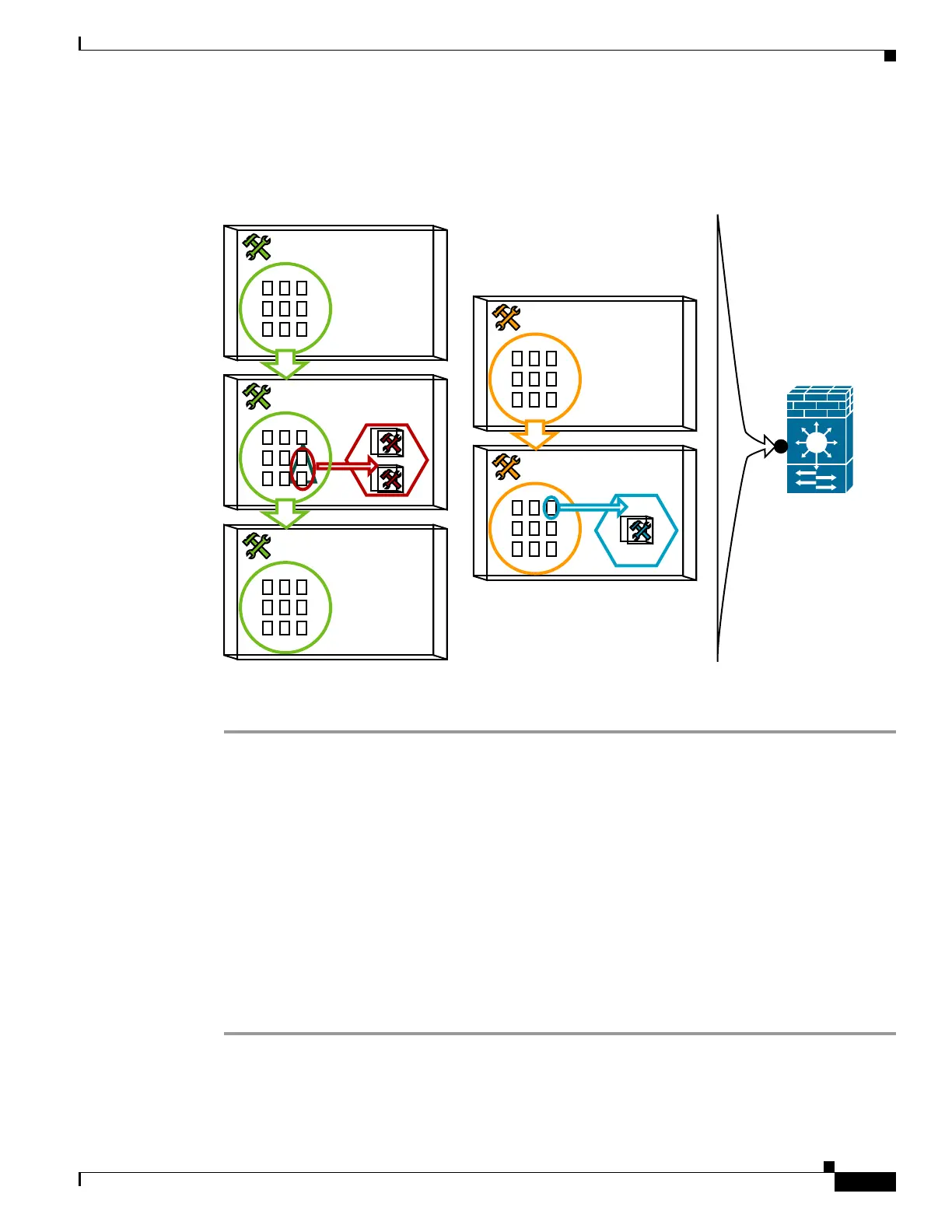1-11
Cisco ASA Series CLI Configuration Guide
Chapter 1 Configuring a Service Policy Using the Modular Policy Framework
Task Flows for Configuring Service Policies
Step 4 Define the actions you want to perform and determine on which interfaces you want to apply the policy
map—Define the actions you want to perform on each Layer 3/4 class map by creating a Layer 3/4 policy
map. Then, determine on which interfaces you want to apply the policy map using a service policy.
See the “Defining Actions (Layer 3/4 Policy Map)” section on page 1-15 and the “Applying Actions to
an Interface (Service Policy)” section on page 1-17.
Task Flow for Configuring Hierarchical Policy Maps for QoS Traffic
Shaping
If you enable QoS traffic shaping for a class map, then you can optionally enable priority queueing for
a subset of shaped traffic. To do so, you need to create a policy map for the priority queueing, and then
within the traffic shaping policy map, you can call the priority class map. Only the traffic shaping class
map is applied to an interface.
See Chapter 1, “Information About QoS,” for more information about this feature.
Hierarchical policy maps are only supported for traffic shaping and priority queueing.
To implement a hierarchical policy map, perform the following steps:
Step 1 Identify the prioritized traffic according to the “Identifying Traffic (Layer 3/4 Class Maps)” section on
page 1-12.
You can create multiple class maps to be used in the hierarchical policy map.
Inspection
Connection Limits
Layer 3/4 Policy Map
Service Policy
IPS
Inspection
Connection Limits
241508
